Today’s Current Affairs: 2nd April 2025 for UPSC IAS exams, State PSC exams, SSC CGL, State SSC, RRB, Railways, Banking Exam & IBPS, etc
Table of Contents
Alzheimer’s : New Drug Found

A new drug, Gantenerumab, shows promise in slowing early-onset Alzheimer’s while significantly reducing amyloid plaque buildup, a key marker of the disease.
- Alzheimer’s disease is a progressive neurodegenerative disorder that primarily affects memory, thinking, and reasoning abilities.
- It is the most common cause of dementia, accounting for 60-80% of all dementia cases
- The disease disrupts communication between brain cells, leading to a decline in cognitive and functional abilities.
- Early-Onset Alzheimer’s occur in individuals aged 65 or older, but around 5-10% of cases develop before this age—this is called Early-Onset Alzheimer’s Disease (EOAD).
- Unlike late-onset Alzheimer’s, EOAD progresses more rapidly and often affects people in their prime working years, making it particularly devastating.
- Genetic factors play a crucial role in early-onset cases, with mutations in three specific genes—APP, PSEN1, and PSEN2—linked to increased risk.
- The buildup of amyloid beta proteins in the brain leads to the formation of amyloid plaques, a hallmark of Alzheimer’s disease.
- These plaques disrupt neural communication, trigger inflammation, and eventually lead to brain cell death.
- Amyloid-targeting therapies aim to reduce these plaques, potentially slowing disease progression.
Gantenerumab:
- Gantenerumab is an experimental drug that was initially discontinued but has now shown promise in new clinical trials.
- The latest trial focused on patients with genetic mutations known to cause early-onset Alzheimer’s.
- It was a randomized, placebo-controlled study, tracking disease progression using brain imaging and blood biomarkers.
- Results showed a significant reduction in amyloid plaque buildup, suggesting the drug may slow cognitive decline.
Sarhul Festival:
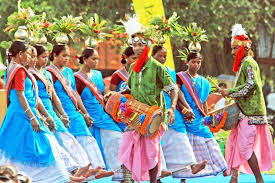
The Sarhul Festival, celebrated by adivasi communities in Jharkhand and the Chhotanagpur region, marks the arrival of spring and the new year.
- Sarhul means “worship of the Sal tree” and signifies the union of the Sun and the Earth, which is essential for life.
- The Sal tree is considered sacred, believed to be the abode of Sarna Maa, the village deity.
- Three-Day Festival:
- Day 1 – Preparations begin, with homes and Sarna Sthals cleaned, Sal flowers gathered, and the village priest (pahan) observing a strict fast.
- Day 2 – Main rituals are performed at Sarna Sthals (Sacred Groves), including sacrifices, prayers for prosperity, and cultural performances.
- Day 3 – Concludes with a community feast, featuring Handia (rice beer), ceremonial fishing, and traditional adivasi cuisine.
- The festival is celebrated by several tribes, including the Oraon, Munda, Santal, Khadia, and Ho.
- Anthropologist Sarat Chandra Roy (1928) noted that Sarhul evolved from a hunting-based ritual to an agricultural festival, reflecting changes in adivasi life.
- Due to historical migration, Sarhul is now celebrated in Assam, Andaman and Nicobar Islands, Nepal, Bangladesh, and Bhutan.
INIOCHOS-25:

Aiming to hone skills against a dozen other counterparts, including the US, Israel, and France, the Indian Air Force (IAF) will be participating in biennial multinational air exercise INIOCHOS-25.
- INIOCHOS is a biennial multinational air exercise hosted by Greece’s Hellenic Air Force.
- It serves as a platform for air forces to hone their skills, exchange tactical knowledge, and strengthen military ties.
- INIOCHOS-25 will take place at Andravida Air Base in the region of Elis, Greece.
- It will integrate multiple air and surface assets from fifteen countries under realistic combat scenarios, designed to simulate modern-day air warfare challenges.
- The IAF contingent will include Su-30 MKI fighters, along with combat-enabling IL-78 and C-17
- Apart from the Hellenic Air Force and the IAF, the participants include France with the M-2000, Israel with G-550, Italy with Tornado, Montenegro with B-412, Poland with F-16, Qatar with F-15, Slovenia with 2 PC-9, Spain with F-18, the UAE with M-2000/9, and the US with F-16, KC-46, and KC-135.
- It will provide an opportunity to train in planning and executing combined air operations, refine tactics in complex air warfare scenarios, and gain insights into operational best practices.
India’s GST Collections Surge 9.9% YoY in March 2025:
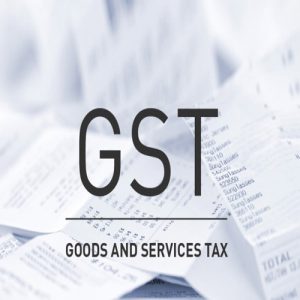
India’s Goods and Services Tax (GST) collections witnessed a strong growth of 9.9% year-on-year (YoY) in March 2025, reaching Rs 1.96 lakh crore. This marks a significant rise in indirect tax revenue, reflecting steady economic activity and increased compliance.
- The gross GST collection for March stood at Rs 1.96 lakh crore, demonstrating strong performance across different tax categories:
- Central GST (CGST): Rs 38,100 crore
- State GST (SGST): Rs 49,900 crore
- Integrated GST (IGST): Rs 95,900 crore
- GST Cess: Rs 12,300 crore
- After adjusting for refunds, net GST collections for March 2025 stood at Rs 1.76 lakh crore, showing a 7.3% YoY growth.
- This increase highlights sustained consumption patterns and better tax administration.
Parbati-II Hydroelectric Project:
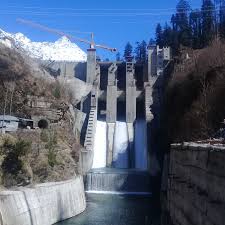
The Parbati Hydroelectric Project (Stage II) is a run-of-the-river project under construction in Sainj, Kullu, Himachal Pradesh.
- It proposed to harness the hydro potential of the lower reaches of the Parbati River (major tributary of the Beas River).
- The river is proposed to be diverted with a concrete gravity dam at Village Pulga in Parbati Valley through a 31.52 km long head race tunnel and the power house shall be located at village Suind in Sainj Valley.
- Total Capacity: 800 MW (four units of 200 MW each)
- The Parbati-II project is expected to generate approx. 3,074 million units (MU) of electricity annually.
- The project is being developed and currently owned by National Hydroelectric Power Corporation Private Limited (NHPC). The company has a stake of 100%.
- The Parbati-II project was initiated in 2003 and was originally scheduled for commissioning in 2010.
- However, it faced continuous delays due to various challenges, including tunnelling issues, water and silt seepage, flash floods, cloudbursts, and adverse geological conditions.
Energy Statistics India 2025:
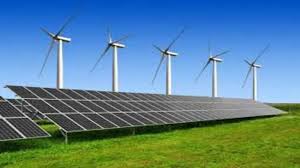
The National Statistics Office (NSO) released the Energy Statistics India 2025, detailing energy production, consumption, and import trends for FY 2023–24.
- The data shows India’s strong energy recovery post-COVID and reflects efforts toward Viksit Bharat 2047 vision.
- Primary Energy Supply rose by 7.8%, reaching 9,03,158 KToE, showcasing resilience and recovery.
- Coal remains dominant, with 79% of total domestic energy supplied and 60.21% share in TPES.
- Renewable energy potential reached 21,09,655 MW, with wind and solar leading.
- Electricity from renewables rose from 2,05,608 GWh (2014-15) to 3,70,320 GWh (2023-24) at a 6.76% CAGR.
- Per capita energy consumption increased to 18,410 MJ/person, a 25% rise in 10 years.
- Renewables expanding fast: Installed capacity rose from 81,593 MW in 2015 to 1,98,213 MW in 2024, CAGR of 10.36%. E.g., Rajasthan, Gujarat, Maharashtra lead in wind and solar installations.
- Industry-led growth: Final energy use by industry rose by 13.2%, driving economic productivity. E.g., From 2.4 lakh KToE (2014-15) to 3.1 lakh KToE (2023-24).Reduced T&D losses: Losses fell from 23% (2014-15) to 17% (2023-24), improving efficiency.
- Renewables outperform fossil fuels in pace: Non-hydro renewables grew by over 210% in 10 years.
- Energy required per INR of GDP dropped to 0.2180 MJ/INR, showing decoupling of energy from growth.
- Coal still contributes 79% of energy supply and 60% of TPES. E.g, Non-coking coal alone accounts for 93.3% of coal production
- Heavy import reliance: India imports 89% crude oil, 46.6% natural gas, and 25.86% coal.
- Per capita electricity uses still low: At 1,106 kWh/person, India trails global average (~3,000 kWh).
- Slow renewable share in actual generation: Despite capacity growth, renewables still not mainstream in total energy mix.
- Urban-rural divide: Rural consumption and accessibility lag behind urban industrial and residential demand.
P4 Initiative:
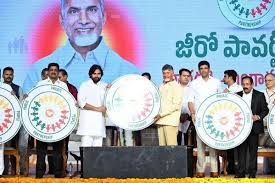
Andhra Pradesh Chief Minister launched the P4 Bangaru Kutumbam-Margadarsi initiative in Velagapudi on Ugadi.
- The initiative aims to uplift underprivileged communities through a collaborative governance model involving public, private, and citizen partnerships.
- P4 stands for Public-Private-People Partnership, a mission mode initiative for social and economic transformation.
- Aim is to eradicate poverty and elevate the economic and social status of marginalised families.
- Create model families (“Bangaru Kutumbam”) as symbols of transformation.
- Targets over 2 million beneficiaries in the initial phase.
- Provides essential services, including free gas cylinders, educational support, and women empowerment schemes.
Decline in India’s Cotton Production:
India, once the world’s largest cotton producer and exporter, is facing a significant decline in cotton production, primarily due to the lack of technological advancements and policy inaction.Hybrid Cotton Varieties developed by Indian scientists like C.T. Patel and B.H. Katarki in the 1970s, has significantly improved yields. Bt (Bacillus thuringiensis) cotton, introduced in 2002–03, used genes from bacterium Bacillus thuringiensis to protect against pests like the American bollworm.
UPI Transactions Hit Record Rs 24.77 Trillion in March 2025, Marking New High in FY25:
Unified Payments Interface (UPI) transactions surged to a record high in March 2025, reaching Rs 24.77 trillion in value and 19.78 billion in volume. This represents a significant 13% increase in value and 14% rise in volume compared to February 2025. The remarkable growth was driven by a surge in year-end transactions, reflecting strong adoption of digital payments across India.
90th Anniversary of the Reserve Bank of India (RBI):
The Reserve Bank of India (RBI) marks its 90th anniversary in 2025, commemorating nine decades of financial governance, economic stability, and monetary policy regulation in India. Established on April 1, 1935, under the Reserve Bank of India Act, 1934, the RBI has played a pivotal role in shaping India’s financial landscape. The event celebrates the central bank’s journey, achievements, and future roadmap in an era of digital banking and financial inclusion.
India’s 6.5% Growth Highest Amongst Advanced:
According to Moody’s Ratings, India is projected to achieve a 6.5% GDP growth in the current fiscal year (2025-26), making it the fastest-growing economy among advanced and emerging G20 nations. Although slightly lower than last year’s 6.7% growth, India continues to outpace its global counterparts, driven by strong tax measures, monetary easing, and capital attraction.




